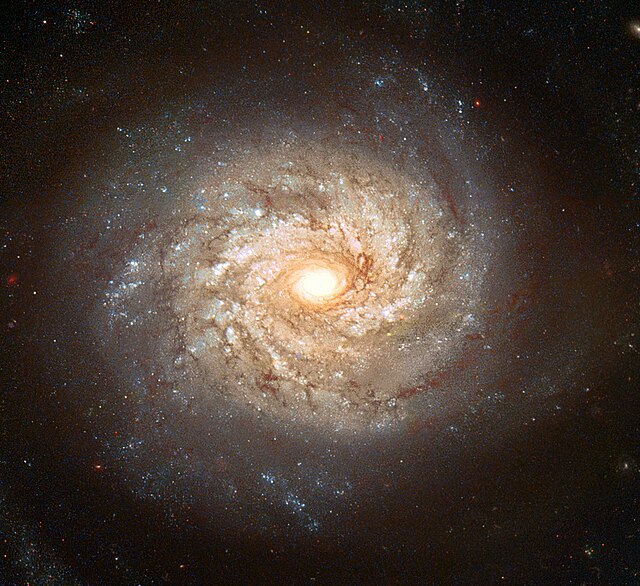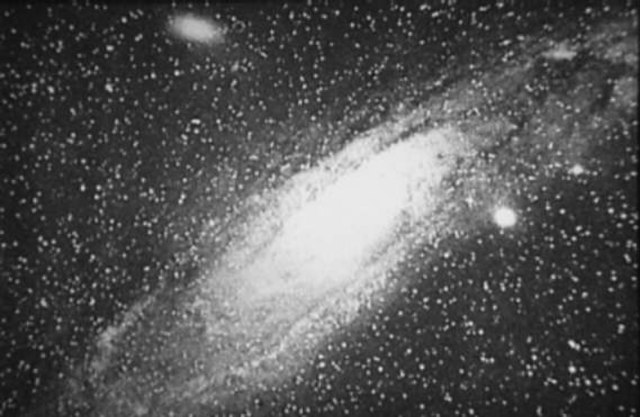The New General Catalogue of Nebulae and Clusters of Stars is an astronomical catalogue of deep-sky objects compiled by John Louis Emil Dreyer in 1888. The NGC contains 7,840 objects, including galaxies, star clusters and emission nebulae. Dreyer published two supplements to the NGC in 1895 and 1908, known as the Index Catalogues, describing a further 5,386 astronomical objects. Thousands of these objects are best known by their NGC or IC numbers, which remain in widespread use.
Spiral Galaxy NGC 3982 displays numerous spiral arms filled with bright stars, blue star clusters, and dark dust lanes. It spans about 30,000 light years, lies about 68 million light years from Earth and can be seen with a small telescope in the constellation of Ursa Major.
Four different planetary nebulae. Clockwise starting from the top left: NGC 6543, NGC 7662, NGC 6826, and NGC 7009.
A galaxy is a system of stars, stellar remnants, interstellar gas, dust, and dark matter bound together by gravity. The word is derived from the Greek galaxias (γαλαξίας), literally 'milky', a reference to the Milky Way galaxy that contains the Solar System. Galaxies, averaging an estimated 100 million stars, range in size from dwarfs with less than a thousand stars, to the largest galaxies known – supergiants with one hundred trillion stars, each orbiting its galaxy's center of mass. Most of the mass in a typical galaxy is in the form of dark matter, with only a few percent of that mass visible in the form of stars and nebulae. Supermassive black holes are a common feature at the centres of galaxies.
NGC 4414, a typical spiral galaxy in the constellation Coma Berenices, is about 55,000 light-years in diameter and approximately 60 million light-years from Earth.
Photograph of the "Great Andromeda Nebula" by Isaac Roberts, 1899, later identified as the Andromeda Galaxy
The galaxy cluster Abell 1413 is dominated by this cD elliptical galaxy designated Abell 1413 BCG. It has an isophotal diameter of over 800,000 light-years across. Note the gravitational lensing.
NGC 3923 Elliptical Shell Galaxy (Hubble photograph)






